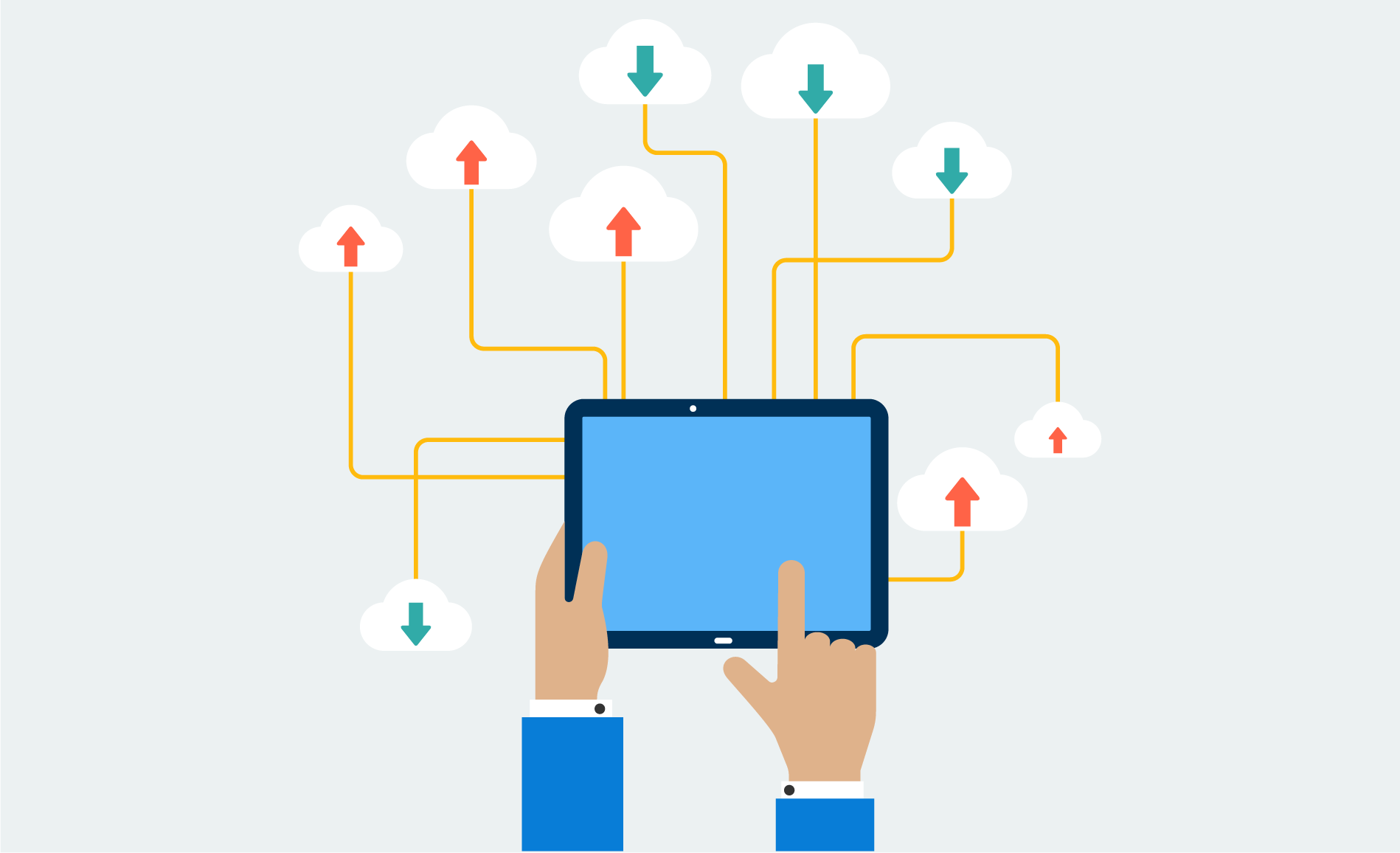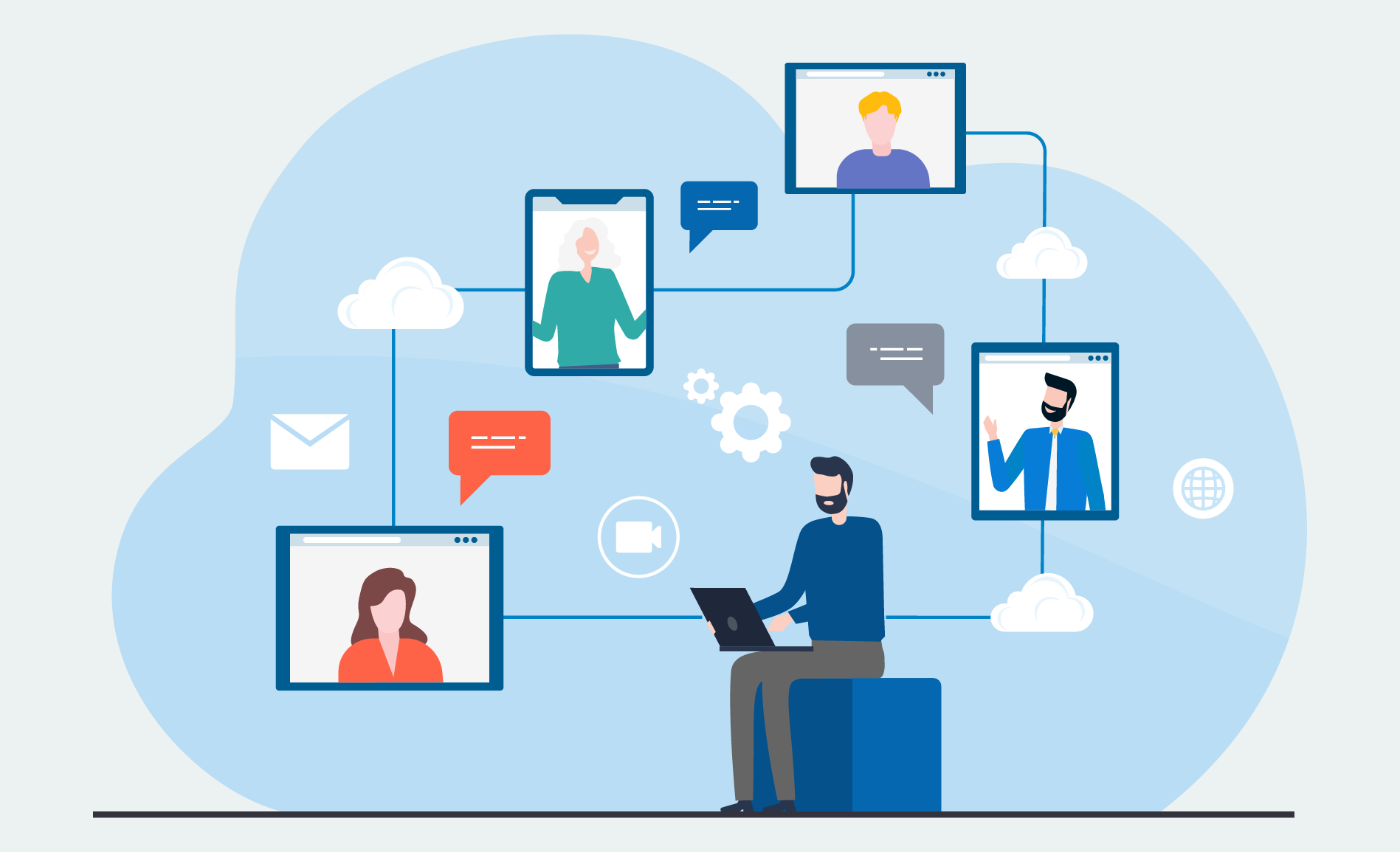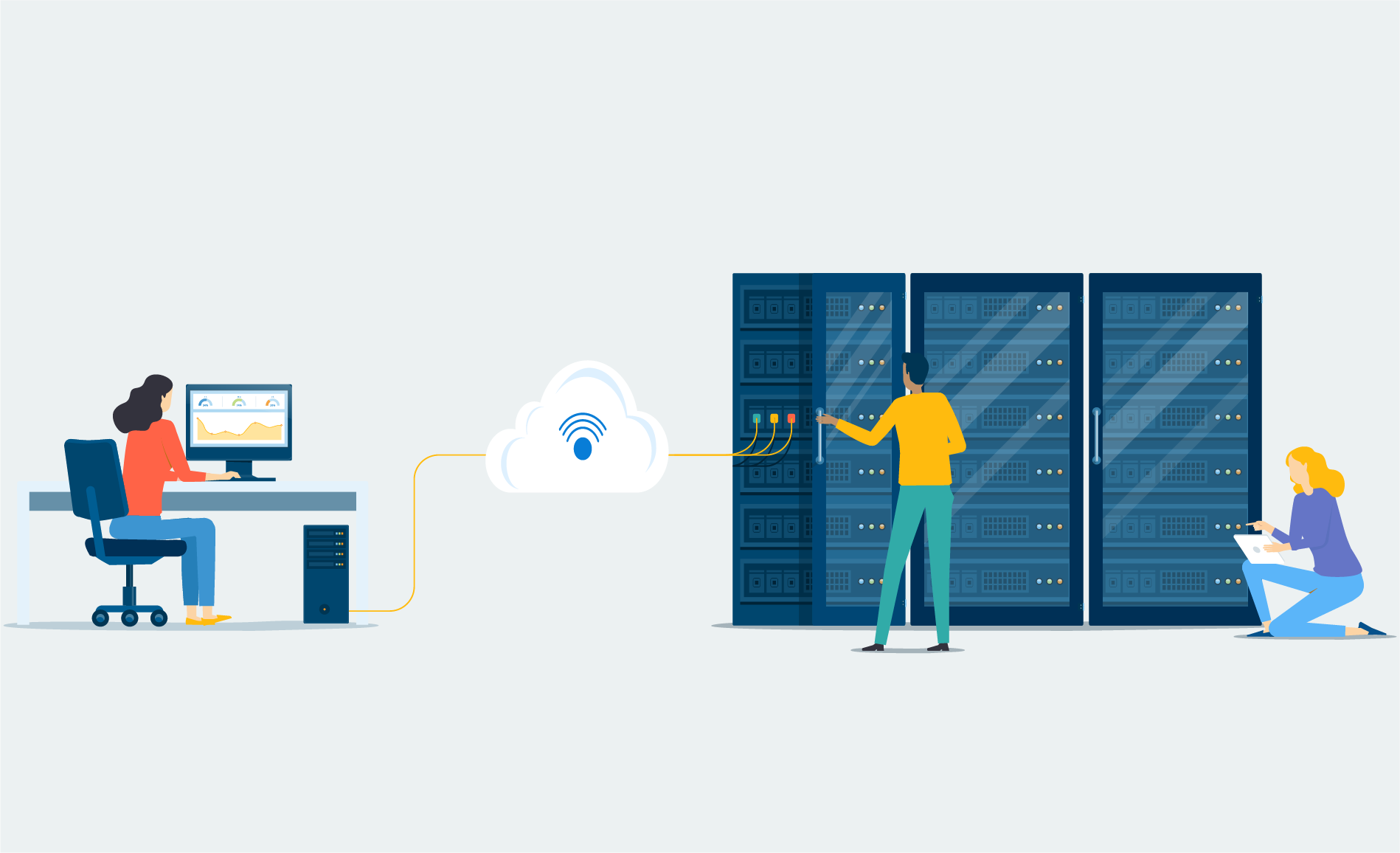Data security is the practice of keeping data protected from unauthorized access or corruption. Since many businesses are moving towards using digital products, whether it’s something as simple as using email or a complicated ordering system, the need for keeping this data protected has never been stronger. A data breach or hack could result in loss of money or confidential information, which could harm your relationship with your employees, customers, vendors, and ultimately your business.
Data protection means protecting not only your business data but also your customer and vendor’s data. Unfortunately, small businesses seem to be a much easier target for hackers since their security systems are usually not as sophisticated as a medium or large business. Yet, 87% of small business owners think they are not at risk of a data attack.
In this blog, we’ll talk about why it’s so important to make sure your customer data is secure, some tools we recommend to bolster your SMB’s data security, and four essential tips on how you can protect your business data in your organization.
Data Security for Your Customer Data
Ensuring your company and employee’s data is protected is certainly very important. However, as a business, it is equally important to ensure your customer and vendor data is protected as well. More and more, customers and vendors are demanding to see a strong privacy policy from the companies they’re working with.
Does your small business have a privacy policy in place? Do your customers and vendors know how you’re going to protect their data? A privacy policy should explain very clearly how you collect their data, and what you do with it once it’s been collected. Being honest with them will help build and maintain a strong, positive, and trusting relationship.
One of the easiest ways you can keep your customer data safe is to avoid collecting information that you don’t need. For instance, if you don’t need to know your customer’s birth date, SIN number, credit card information, or any other personally identifiable information, don’t ask for it. Also, consider adding multiple layers of protection to your data, such as multi-factor authentication, or password-protecting your sensitive data. The more layers of protection that you add, the harder it is for hackers to get through. Additionally, routinely purge old customer data when it’s no longer needed.
Data encryption is probably one of the bigger items that can really make a difference. For example, if you are receiving financial information from a customer, passing that information on a secure, encrypted server will ensure it’s not hacked while being transmitted (for example, SSL or TLS encryption on websites).
Data Security Tools to Keep Your Data Secure
Of course, we understand that it can be difficult to keep a handle on data security. Here are three tools that we recommend you implement in your organization:
Data Security Tool #1: Windows Information Protection (WIP)
Windows Information Protection (WIP) integrates with your familiar Microsoft products like Office 365. WIP identifies what is considered personal information, and what’s considered corporate information, then determines which apps can access which data, and provides you with basic controls and functions to perform certain tasks that are designed to keep business data safe (for example, restricting employee abilities to copy or paste data into an unsecured location). This does not get in the way of your employees’ user experiences, but is designed to make sure that your organization’s data doesn’t leak into personal or public domains.
Data Security Tool #2: Office 365 Data Loss Prevention
Office 365 Data Loss Prevention can be implemented to prevent the sharing of sensitive information (like credit card information, or information that might be travelling to users who are outside your organization). By setting up policies through the Exchange Administration Centre in your Office 365 Admin portal, you can tell this Data Loss Prevention tool to scan your employees’ emails and look for instances where one of your corporate polices are about to be breached. When detected, your employees will get a pop-up in the email window that alerts them to the sensitive information they’re about to pass on.
Data Security Tool #3: Microsoft InTune
InTune is a secure mobile productivity tool that can be added to your employees’ devices, and can provide the data protection that your business needs. With InTune running unobtrusively in the background, your employees can use their Office apps with ease. InTune is flexible, Cloud-based, and can give you choices on how your data is accessed. If it should become necessary to do so, you can wipe corporate data from personal devices without touching the personal data in the device.
Data Security: 4 Essential Tips on How to Protect Your Business Data
Protecting your data is (or at least should be) one of the highest priorities for organizations today. But, doing so should not compromise your staff’s mobility and productivity. Here are four efficient ways you can better protect your data:
1. Manage Mobile Devices and Apps
The Bring-Your-Own-Device (BYOD) trend is just one example of how mobile devices and apps are changing the way small businesses work. These trends, however, come with a number of new security concerns, because these devices and apps are often storing your critical business data in the public Cloud, which doesn’t adhere to the same security standards as the private Cloud.
Data Security Solutions:
- Manage important applications instead of the device itself – this will minimize the disruption to the user.
- Ensure transparency on everything you’re doing, especially when it comes to your employees’ personal devices.
- Protect only your corporate data – make sure you’re not encroaching on personal data in any way. The above-mentioned Windows Information Protection or Microsoft InTune can help with this.
2. Enable Secured Collaboration
When it comes to sharing information, your employees’ convenience will always trump their awareness of security – they’ll get creative with how they share information, and they’ll put your data in jeopardy without even realizing they’re doing it.
Data Security Solutions:
- Established secured tools for sharing information (like SharePoint), to ensure that your employees have access to what they need.
- If sending sensitive materials through email, make sure you’ve got a digital rights management (or other secured email solution) in place. This is one place where Office 365 Data Loss Prevention could help. See the previous section for details.
3. Reduce Malware Exposure
Malware is quite prevalent in the news these days. With phishing attacks, spoofing schemes, targeted ransomware incidents, etc., we’re seeing a huge rise in malware exposure.
Data Security Solutions:
- Implement a training plan that ensures your employees go through periodic basic awareness training.
- Consider implementing an email protection system (like Exchange Online Advanced Threat Protection) that includes time-of-click protection, for those inevitable human errors that will happen.
- Implement policies and procedures that limit certain activities, i.e. checking their personal emails at work, or downloading apps from a reputable source, etc.
4. Prevent Data Loss through Email
Ever typed an email to a colleague, then, after you hit send, you realize you’ve sent it to someone else on your list with a very similar name? Employees can inadvertently send information to the wrong recipient, attach the wrong document, or otherwise share access to your organization’s sensitive data with just a few typos.
Data Security Solutions:
- Data Loss Prevention (DLP) capabilities can help protect your organization’s data. Investigate how you can implement DLP in your ecosystem.
- Limit the distribution of certain emails or files, or impose a digital rights management qualification that would put restrictions on who can access the data.
Related: Protect Your Data: 7 Ways to Improve Your Security Posture
Your Data Security Journey: Start with a Cybersecurity Assessment
As businesses move more and more towards digital systems, the topic of data security should always be prevalent in the minds of business owners. But where do you start? Have you considered the implications of not protecting your organization? What’s the first step in this journey of protecting your data?
A Cybersecurity Assessment can be this first step, helping you to understand how to secure your data. By undertaking this assessment, you’ll be able to get an overview of your cybersecurity infrastructure, including detailed recommendations on how you can remedy any risks that are identified. Over the course of the assessment, you’ll understand how to educate your employees on cybersecurity, what tools (like the ones we discussed in this post) are out there and how you can implement them in your organization, and you’ll also come away with a clear plan of what your priorities should be.
This blog post is co-authored by ProServeIT and Change Connect. We publish a monthly blog specifically written for small businesses. Some of the topics we have discussed include security, CRM, Cloud computing, and Business Intelligence (BI). Click here to view a list of the previous co-authored blogs for small businesses.
About ProServeIT
As a multi-award winning Microsoft Gold Partner, ProServeIT has been helping SMBs increase their efficiency for over fifteen years. We’re constantly looking for ways to help our customers get the most out of their technology investments, and we love to introduce our small business clients to new tools that can help them be more productive. Interested in implementing InTune, Enterprise Mobility + Security, Windows Information Protection, or Data Loss Prevention in your small business? Talk to us to arrange a complementary demonstration of these, or other tools, that might be right for you!
About Change Connect
Change Connect specializes in helping clients to work more efficiently and effectively in pursuit of their revenue goals. We offer customized solutions for small to midsized businesses with a focus on Sales Transformation, which includes implementing strategic Sales and Marketing plans. Whatever stage your business is at, whether you’re a start-up looking to expand or an established company looking to move from a plateau to record growth, Change Connect is your partner in transformation. Change Connect – Making Sales Scalable.



